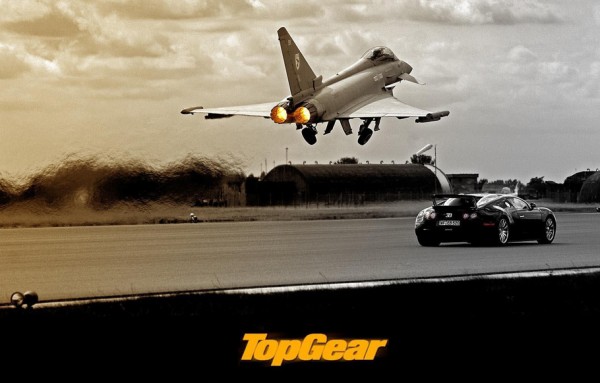For car enthusiasts worldwide, it is difficult to imagine a world without Top Gear.
The BBC’s popular car programme has spawned a number of international spin-offs, is shown in 170 countries and has its own magazine as well. All of it is dedicated to our sacred cow, the automobile.
Yet unbeknownst to many, the current — very popular — version of Top Gear is extremely different from the original version which started airing in 1977. Whilst Top Gear is currently all about entertainment, it really did start off as a serious and somewhat boring car show. Originally top Gear made regular, factual, automotive reviews and gave consumer advice.
Nobody is identified more with Top Gear than host Jeremy Clarkson. Clarkson joined Top Gear in 1988, and continued as a presenter until 2000. All the while Clarkson has also been a writer of many books and columns where he expresses his entertaining though occasionally politically incorrect views on cars and the world. Though in the original Top Gear series even Clarkson managed to deliver boring and factual car reviews. In the original Top Gear series Clarkson was joined by several other presenters, the most known of which was Tiff Needell. Needell is a formed race driver, who — very briefly — drove in Formula One.
This is how they used to test cars in old Top Gear
Needell and Clarkson had something of an on-screen rivalry with Clarkson doing the more serious reviews while Needell got to drive exotic cars sideways around a racetrack in a cloud of smoke.
Around the year 2000 the old Top Gear lost most of its well known presenters and eventually got cancelled. Many of the original production staff and presenters including Needell and Vicky Butler-Henderson moved to Channel 5 where the car show Fifth Gear was launched in 2002. After the first season of Fifth Gear, the BBC decided to re-launch Top Gear in a different format. From then on, the show would be in a studio setting and run for one hour instead of 30 minutes as before.
Alongside main presenter Jeremy Clarkson, the show featured Richard Hammond and James May as co-presenters. May represents the more sensible, slower driving kind of car enthusiasts which has earned him the nickname «Captain slow». Hammond is the boy who never grew up, and his main job appears to be liking cars which Clarkson hates. In 2006 Hammond nearly died recording for Top Gear when a jet-powered car he was driving suffered a tire failure and crashed. He spent a considerable time in hospital and suffered brain damage in the event.
![]()
February 10, 2010, presenters Jeremy Clarkson and James May attend the Top Gear Live photo call ahead of the start of the Acer Arena live show
![]()
Richard Hammond (168) is much shorter than Jeremy who is 1.95 but when they are kidding around, they are pretty close
![]()
The trio Clarkson-Hammond-May has since been proven a winning combination, their on-screen rivalry works well and offers plenty of opportunity for comedy. In more ways than one, Top Gear became a new genre of car show that focused on comedy and entertainment. Almost a parody of the original Top Gear, it does not let facts get in the way of a good story. People who tune in expecting solid car reviews or interesting facts will come away disappointed. But the entertainment format has undoubtedly been a hit and the BBC’s enormous financial resources have allowed it to go where no other car show can.
![]()
Jeremy Clarkson, James May and Richard Hammond with the award for Most Popular Factual Programme at the National Television Awards 2007 at the Royal Albert Hall, London
![]()
Jeremy, Richard and James cross Tower Bridge on a military vehicle on September 1, 2008 in London.
Jeremy tests the smallest car in the world
Top Gear’s relatively gigantic budget has led to many insane stunts. Memorable examples include crossing the English channel into France using a modified Toyota pick-up truck, driving another one over frozen seas to the North pole and strapping rockets to cars on several occasions — with varying degrees of success. In fact the producers of Top Gear seem to have realized early on that failure is more entertaining than success. As such, the presenters have not succeeded in most of the «challenges» the producers created for them on the show. Hilarious viewing? Most certainly.
![]()
![]()
Another hit invention of the new Top Gear format was The Stig. The Stig is an anonymous driver, whose face is never revealed. He is tasked with driving cars as quickly as possible around their airfield test track. In a way The Stig is a direct replacement for old Top Gear’s Tiff Needell. None of the current presenters have been race drivers, nor do they claim to have exceptional driving talent. So for comparing lap times, they needed a professional driver. The role of «Stig» has been played by several (ex)racing drivers over the years but those who have revealed themselves have subsequently been fired. Whether or not the Stig’s popularity was anticipated, he has certainly boosted merchandising.
![]()
At the end of the day, what sets Top Gear apart from its many clones is only Jeremy Clarkson. He is a man whose business it has become to say things and do things that many think about but cannot get away with. Clarkson has been involved in countless scandals from insulting particular groups of people to entire countries. Rarely a week goes by without Top Gear getting into a diplomatic row of some kind. One has to feel sorry for those in the BBC’s complaints department who have to process the avalanche of viewer complaints that Clarkson produces on a regular basis. But there’s no such thing as bad publicity, and the net result of rubbing millions the wrong way appears to be well positive.
![]()
Top Gear landed itself in some hot water — again — after Mexico’s ambassador to Britain demanded a formal apology from the BBC for this fragment of Top Gear.
But there certainly are critics of the format itself as well. Most notably the many car enthusiasts who loyally watched the original series feel that the scripted «accidents» and lack of objective car reviews on the show have hollowed out the concept. But it is difficult to argue with viewer ratings, and Top Gear has gone where no other car show has gone before before it. As it turns out, the key to success was merely to not be a car show.
![]()











